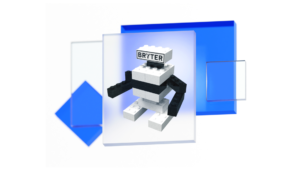From outsourced processes to RPA
Enterprises have been looking for ways to make business processes faster, more efficient and less error-prone since the ‘90s. Various process automation needs have been addressed by changing solutions, such as plain outsourcing or BPM (business process management) software.
RPA (robotic process automation) is the latest manifestation of this. What started as a tool to copy/paste data from one system to another, and read/write databases, expanded its capabilities over time, such as moving electronic files, logging-in to apps or filling forms. A typical example is the passport application process. Many of these processes are simple and can be represented by a visual workflow. RPA vendors allow users to piece together their workflows with configurable nuts and bolts.

Services, however, add an extra layer of complexity to a process: they require knowledge or expertise. Most service departments, whether internal or external, are struggling to incorporate their logic into these processes. It’s one thing to enter a serial number or notify an administrator; it’s another to actually define and implement the criteria on the basis of which these process steps happen. Precisely the difficulty in managing rules that guide bot behaviour constitutes the Achilles heel for RPA.
The more complex the logic, the more advanced your toolset must be. At BRYTER, we call this toolset ‘rule management’. They are the tools to manage conditional logic or do calculations, they are decision matrices and other expression forms for different types of reasoning.
Another problem for service professionals is that process automation software often requires technical skills and is not targeted towards the business user. It’s your CTO / CIO buying the software and they might forget business users need a proper, intuitive interface to manage the processes without code. Business users not only require the ability to visualize workflows without code but also prefer to implement their reasoning without code. A truly scalable process automation solution allows business users to adjust their logic on the go.
Introducing: service automation. A reliable service automation platform addresses these two concerns: you can now bring your logic into your workflows without technical constraints. It makes the underlying rules digital, connects them with other systems and makes them manageable for business users. Previously you had to pick: make complex decisions or do it in a user-friendly way. Now you can have both.
If you are looking to easily build without programming using an intuitive, visual “drag-and-drop” editor, book a demo to learn how BRYTER no-code platform can help your business to automate complex services.








